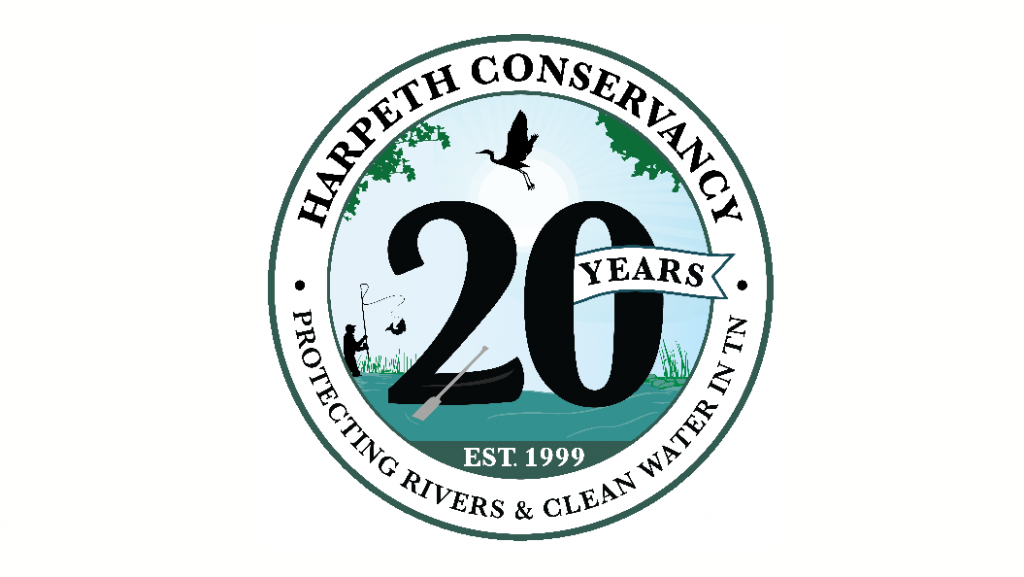River conservation group cites city’s commitment and continues to seek collaborative approaches to reducing pollution in the Harpeth River
See PDF format here.
FRANKLIN, TENN, March 26, 2019—In an effort to foster a more collaborative approach to restoring water quality in the Harpeth River, Harpeth Conservancy today announced that it and the City have agreed to dismiss their respective appeals of the permit issued in 2017 for the City of Franklin’s sewage treatment plant expansion.
“Harpeth Conservancy is committed to a collaborative effort around the entire Harpeth River watershed to make this State Scenic River a showcase of stakeholder-led solutions. When we all work together toward a common goal, the process can result in the entire river system recovering and meeting water quality standards necessary to protect wildlife and public health,” said Dorie Bolze, President & CEO of Harpeth Conservancy.
The Harpeth River, which flows through Rutherford, Williamson, Davidson and Cheatham counties, has been listed as impaired by nutrients since 1996 and by phosphorous since 2004 by the Tennessee Department of Environment and Conservation (TDEC). In 2015, American Rivers ranked the Harpeth among the top 10 of “America’s Most Endangered Rivers”. That report highlighted the threat of sewage pollution and excessive water withdrawals.
Franklin’s sewage treatment plant is the largest single source of permitted discharge of pollutants into the river.
Under the 2017 permit, TDEC allows Franklin to discharge an average approximately 174 pounds of phosphorous per day into the river. This is more than double the average approximately 72 pounds per day discharged over the past five years.
During the comment period prior to the issuance of the 2017 permit, Harpeth Conservancy and national experts presented information that resulted in TDEC adding a threshold limit for phosphorus discharges. This provision, known as an action level, requires Franklin to report to TEDC when its monthly phosphorus discharge is greater than the limit.
In February 2018, Franklin gave TDEC notice that it had exceeded the action level and engaged with TDEC to optimize the current sewer plant. The optimization efforts reduced phosphorous discharges into the Harpeth from 126 pounds per day in February 2018 to 53 pounds per day in November 2018.
Harpeth Conservancy presented the dismissal offer in a March 15, 2019 letter to the City of Franklin and TDEC.
“We commend the City of Franklin and TDEC for the encouraging results of this optimization effort. This shows the City has the staff, technical expertise and resources to reduce discharges, which will likely even save the City money,” Bolze said.
She noted that City Administrator Eric Stuckey stated in the April 24, 2018 meeting of the Franklin Board of Aldermen that the “[City’s] commitment [is] that the loading we put in the river is not more than it is today even though we are adding treatment capacity.”
Bolze pointed out that, even with the reduction in discharges, the Harpeth River remains impaired for phosphorus and more work is needed. However, she said the City’s stated commitment and success with optimization was “encouraging” and a factor in Harpeth Conservancy’s decision to dismiss its permit appeal.
“Although our permit appeal is well-grounded in both law and fact, we are willing to put it aside to give a stakeholder-led pollution reduction study and plan the best chance for success,” Bolze said.
She noted that several local governments, landowners, farmers and others, including Harpeth Conservancy and the City of Franklin, have expressed a willingness to collaborate and work with TDEC to develop and implement a successful stakeholder-led pollution reduction study and plan (TMDL). The TMDL (total maximum daily load) will determine the ability of the river to assimilate various pollutant and allocate pollutant input loads among various river users.
The federal Clean Water Act requires a TMDL study for all waters that are impaired and do not meet clean water standards.
During a meeting about the Harpeth TMDL last November, TDEC encouraged stakeholders to work on organizational efforts that would result in an effective process.
“We look forward to working with TDEC and the others to create a structure for this TMDL that includes all communities and stakeholders in a steering committee supported by experts. We should foster a process that involves all affected parties in understanding the available data, determining fair and cost-effective solutions, monitoring results and maintaining long-term leadership throughout the river system,” Bolze said.
She added, “We can and must work together for a Harpeth River TMDL that helps us achieve our shared goal of removing the Harpeth from TDEC’s impaired stream list as soon as possible.”
The Harpeth River is one of the most heavily recreated rivers in Tennessee, with more than 500,000 visitors a year to the around Harpeth River State Park. The section that flows in Davidson County is designated as State Scenic River. From the rural headwaters near Eagleville to the Cumberland River near Ashland City, the watershed includes more than 1,000 miles of tributaries that drain approximately 870 square miles across Rutherford, Williamson, Davidson, Hickman, Dickson and Cheatham counties in Middle Tennessee. The Harpeth is one of the few entirely free- flowing rivers in the state and one of the most ecologically, culturally, historically, and recreationally significant rivers in Tennessee.
The chart below shows results of Franklin’s optimization effort.










